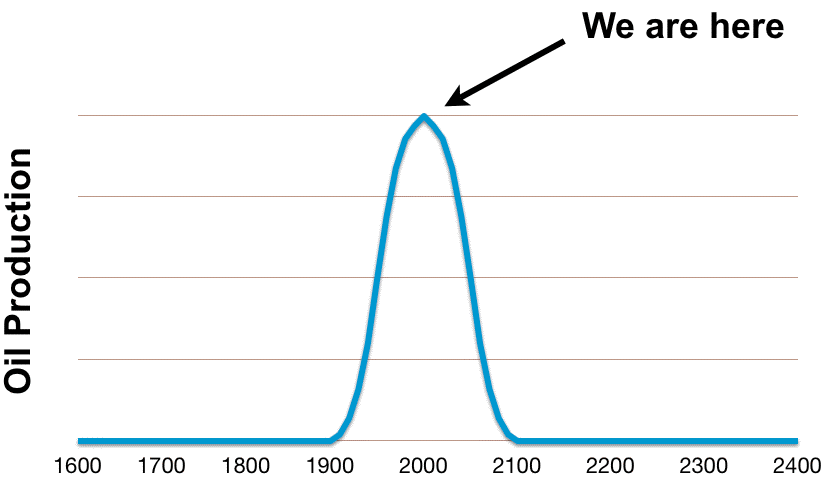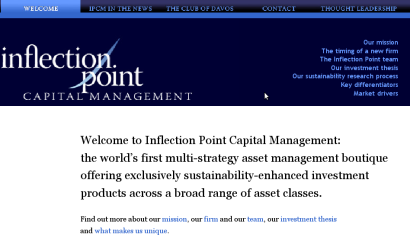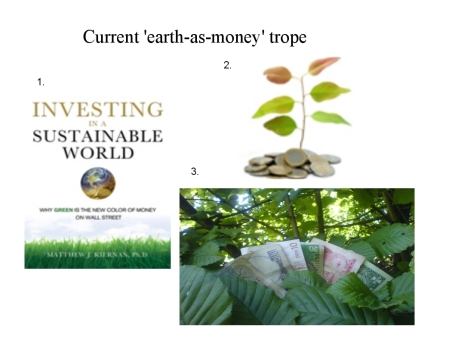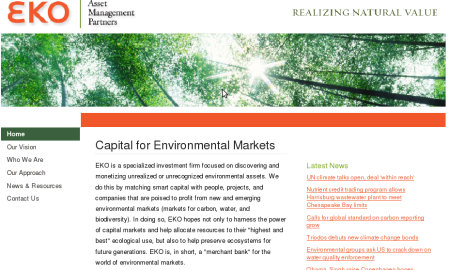In this series’ previous post, we discussed making wine at home as a possible solution to wine availability in an age of declining cheap energy. In this the final post of this series, we will discuss in some detail the advantages of home grape growing and wine making. Along the way, we’ll mention organic viticulture methods and briefly discuss the advantages and disadvantages of specific grape varieties that might be considered for a home vineyard.
Advantages I see for home wine production include the following. First, we’re by no means limited to Concord and Delaware; we have many, many more choices than Gene Logsdon’s immigrants did (Logsdon 78). Many of these newer choices have a fair degree of disease resistance, and they include a much wider variety of wine types and flavor characteristics. Second, the home winemaker can rely on his/her own wine tastes in choosing vines to cultivate; he/she is not restricted to what will sell commercially. Third, it’s easier to practice organic soil maintenance on a small scale, and this could prove very important in maintaining vine health in an era when fungicide sprays may be difficult to obtain. Fourth, growing one’s own wine as part of a household economy means minimal carbon footprint and possible long-term sustainability. Finally, for those who have the attention to detail, the interest, the patience, and the space to raise and test hundreds of grape seedlings, breeding one’s own grapes for wine quality, better disease resistance, and suitability for one’s local conditions remains a possibility.
Choices, Choices
We have many more possible grape variety choices in the east and Midwest than just about anywhere else on earth. I have listed a mere few of them at the end of this post. There are so many others that one could try, with new varieties being released every few years or so, that it can be almost overwhelming. The key is to pick vines that ripen well in one’s climate, that have at least some disease resistance, and that can produce the kind of wine that one’s household enjoys. And another key is not to pay attention to what the wine snobs say.
Antidote to Wine Snobbery
Leon Adams defined wine snobbery as “drinking the label, not the wine” (13). Snobbery occurs when people turn up their noses at a wine someone else enjoys just because they don’t like it (or think they don’t like it). Wine, for some strange reason, seems to encourage this boorish attitude. Here in the eastern US, a kind of wine snobbery has arisen against the French hybrids—especially the red ones—among those who enjoy the vinifera wines grown and produced here and elsewhere. Growing the kinds of grapes that make the kinds of wine one likes, and then making the wine oneself, is perhaps the best preventive to snobbery, since the wines can be enjoyed at home without disparaging comments from others.
Furthermore, grapes that aren’t widely grown by commercial operations can often be good choices for home winemakers. I’ll talk about a few of these in my comments on specific grape varieties. The home winemaker is free to experiment with unusual varieties since there’s no bottom line to keep in mind.
Organic Grape Growing
Organic agriculture has made significant strides in recent decades. The key to organic growing is building, maintaining, and protecting the soil structure, including the complex soil ecosystems of microorganisms and other soil dwellers. We are learning more and more every year about the vital importance of maintaining and encouraging good soil ecology, as it provides direct benefits to the plants we are trying to grow, including increased disease resistance. Lon Rombough, in his excellent book on organic grape growing (see the Works Cited list at the end of this post) gives a detailed discussion of the benefits of organic soil maintenance. I highly recommend Rombough’s book, not only for the organic techniques themselves but also because it provides all the basic information one needs for successful grape growing—not just the basics of organic soil maintenance, but also the fundamentals of grape growing such as training and pruning.
One of the most interesting and helpful discoveries about soil maintenance is the importance of micorrhizal fungi. These fungi live in the soil and develop symbiotic relationships with the roots of many plants, including grapevines. The fungi provide soil nutrients to the plants, and the plants in turn provide sugars to the fungi through photosynthesis. This symbiotic relationship can help keep vines from becoming stressed, making them more resistant to disease and insect damage. Lon Rombough provides detailed information about micorrhizae in his book; he also posted this article online. Micorrhizae inoculant is available online and is easy to use.
Many techniques for organic soil maintenance exist; one of the best known is the French bio-dynamic system. Lon Rombough recommends that anyone interested in growing grapes look into this system (Rombough 72). I don’t know much about bio-dynamics specifically, but it and similar organic techniques (I think of John Jeavons’ and Toby Hemenway’s books) seem to be ideal for home and small producers. They will likely become vital in an age when fossil fuel inputs are not available or are extremely expensive.
Home Economics
Growing one’s own grapes and making one’s own wines with them, just like growing and canning one’s own tomatoes, can be a valuable support to a household economy. And it can eliminate most of the carbon emissions caused by industrial-scale wine production, distribution, and retailing. Here’s a simple example: a home winemaker can clean and re-use empty wine bottles much easier than a commercial operation could. One can even learn how to culture wine yeast strains and keep them viable from year to year.
Creating New Grape Varieties
I won’t go into detail about this because Rombough devotes an entire chapter to the topic. Anyone interested in the topic should consult Chapter 13 of his book. All who are interested in maintaining the cultivation of good wine grapes in the eastern third of North America into the future will be interested in breeding efforts, whether they actually want to participate in it or not. The goal for breeders would be a vine that reliably produces grapes capable of making high-quality wine, is well-adapted to one’s locality, and that is so highly resistant to the indigenous diseases and insect pests that it can be grown successfully in a given location without chemical spray. Those who have the inclination, the patience, and the space to engage in breeding grapevines will help carry the tradition of quality wine into the future.
Musings about Specific Grape Varieties
I don’t know this, of course, but my guess is that the immigrants Gene Logsdon mentions did not spray fungicide on their Concord or Delaware grapes. Neither of these varieties is immune to fungus attack, but if the vines were planted in a favorable location with good air circulation and trained to take best advantage of that circulation, they would have been less likely to contract disease. If they did, the grower might have picked off diseased leaves, shoots, and/or clusters and burned them. Active and meticulous grower attention to how the vines are doing, along with removing and disposing of any infected plant material, can go a long way toward maintaining vine health. Add to that solid, organic soil building and soil ecosystem maintenance techniques, including the cultivation of micorrhizal fungi, and the grower can increase odds that the vines will stay healthy most of the time.
But the vines themselves come first. Choosing vines that have natural resistance to infection is the first line of defense. It isn’t infallible, but it’s the best place to start here in the humid east and Midwest. I’m going to end this discussion with some thoughts about specific wine-grape varieties, including a few that are not commonly seen in commercial vineyards, if they are grown there at all. I’m basing these choices primarily on disease resistance and wine quality.
These are NOT recommendations, however. These are mostly observations. The varieties one should try depend on one’s local conditions (including such factors as disease pressure, winter cold, length of growing season, air circulation, and soil type and drainage) and one’s personal tastes in wine. One may or may not wish or be able to consider any of the varieties mentioned here. Nevertheless, readers might use my descriptions as a guide to the things to look for when choosing grape varieties to grow.
I did not include any vinifera varieties here, since they are all well known—if you live in a favorable location (such near the shore of one of the Great Lakes) and want to try Riesling or Cabernet Franc, by all means go for it. Just keep in mind that you likely will be committing yourself to rigorous and systematic spraying against disease. Also, I didn’t discuss most of the standard labrusca varieties—Concord, Catawba, and Niagara, not because of snobbery (if you enjoy wine from these grapes, by all means grow them!) but because they usually need sugar amelioration. I’m assuming that refined sugar, just like fungicide chemicals, may be in short supply in a future without cheap energy, so I think it’s best to include only grapes that are capable of obtaining adequate sugar levels on their own.
For Red Wine
Baco Noir —this French hybrid is a good choice for beginners. The vines are easy to grow and it’s easy to handle in the wine cellar. It can make a good red wine. Vines are quite vigorous—secondary shoots with secondary clusters need to be pinched off. Grapes ripen quite early and must be protected from birds. A friend in southeast Ohio told me it is susceptible to black rot there, but the vines were always healthy for me in Bowling Green. Baco tolerates heavy soils.
Chambourcin —Considered one of the best red French hybrids. Productive, moderately disease resistant, Chambourcin produces a balanced dry red wine that is often highly rated. But it needs a long growing season to ripen fully. The other common French hybrid reds—Chancellor, Chelois, and De Chaunac—ripen earlier than Chambourcin and have similar wine qualities. Of the three, Chelois, perhaps, is the most disease resistant. Some commercial operations blend two or more of these four varieties for a proprietary red.
Corot Noir —A new variety from the Cornell breeding station in Geneva, New York. The release notes claim that Corot makes a vinifera -like red wine with lots of tannins and none of the grassy, herbaceous character that some dislike in the red French hybrids. They also claim good disease resistance.
Frontenac —Developed at the University of Minnesota breeding program for cold resistance, Frontenac produces a uniquely flavored, more vinifera - than hybrid-charactered red wine. I’ve tasted wine from Frontenac and it had a luscious, cherry-like aroma and flavor. It lacks the typical red hybrid herbaceousness. Frontenac vines should be highly disease resistant.
Marechal Foch —A very early ripening French hybrid, originally from Alsace and named for Marshall Ferdinand Foch, the French World War I hero. It’s highly resistant to cold and disease. It ripens well in cool growing seasons. Ron Lombough indicates that in the cool coastal Oregon climate it can be grown without spray and the cool nights help it develop a deeply-colored, complexly flavored wine (188). It’s grown successfully here in Ohio, too, though it usually ripens with perhaps less complexity. A sister variety, Leon Millot (from the same cross as Foch), ripens a week earlier and produces a very similar wine. Millot was disease free in Bowling Green, but I had to protect the ripening clusters from the birds. Foch and Millot might be good choices for home growers the northern Great Lakes regions.
Marquette —A new variety from the University of Minnesota breeding program, Marquette is supposed to be capable of producing a vinifera -like red wine with lots of tannins and without red hybrid herbaceousness. Marquette should be quite disease resistant and very cold-hardy.
Noiret —From the Cornell breeding program, Noiret is a newer variety that, like sister release Corot Noir and Minnesota’s Marquette, promises to produce a high quality, vinifera -like red wine with none of the red hybrid herbaceousness. One commercial winemaker recently told me he’s very excited about offering it when his first crop is ready for release in a couple of years. Noiret may be a bit less resistant to disease than Corot.
Norton —An old American variety, also called Norton’s Virginia and Virginia Seedling in the east and Cynthiana in Missouri and Arkansas. Thought to be pure or mostly Vitis aestivalis , Norton can produce a high-quality red wine with no off-aromas or flavors. It needs a very long growing season to ripen properly. It may not be a good choice for beginning winemakers, as it requires expert handling to make good wine. Norton vines are said to be virtually immune to fungus disease.
For White Wine
Beaumont —The late Byron T. Johnson of Cincinnati bred grapes for both disease resistance and wine/juice quality and released several named varieties. Lon Rombough claims that Johnson’s varieties can be grown “in much of the central Midwest” without fungicide spray (242). Unfortunately, of the varieties Johnson released, only Beaumont and Kee-Wah-Din (a Baco Noir cross) are available commercially, so far as I know. (Someone who is interested in starting a grapevine nursery and who likes to do detective work might want to track down and obtain cuttings of other Johnson releases like Scioto, Beaufort, Joyous, and Chief Wauwautan [Rombough 242], propagate them, and begin offering them to the public.) Beaumont is descended from Delaware; the clusters are similar to Delaware in appearance, but the vine is more disease resistant than Delaware. Johnson thought that it made an excellent white wine with a slightly musky or spicy character, similar to Delaware. Beaumont certainly is worth experimenting with at home.
Cayuga —From the Cornell breeding program, Cayuga (often labeled Cayuga White) was their very first wine grape release, and it immediately became popular among growers and winemakers in upstate New York and beyond. Cayuga makes an excellent, fruity white wine that some have compared to Riesling. The vine is vigorous, easy to grow, and quite resistant to disease. Cayuga has Zinfandel and Seyval in its ancestry.
Chardonel —From the Cornell breeding program, Chardonel is a cross between Seyval and Chardonnay and is supposed to have wine qualities similar to its more famous parent. It isn’t widely grown in Ohio, however, possibly because Chardonnay itself grows well along the Lake Erie shore, but it’s popular in places like Missouri where summer heat and humidity are simply too much for Chardonnay. Moderately disease resistant.
Delaware —Among the old labrusca varieties, winemakers considered Delaware the best for wine quality. And it’s still worth growing, in my opinion. My favorite wine from the old Steuk winery in Sandusky, Ohio, was a dry Delaware. Unfortunately, Steuk went out of business about fifteen years ago and I haven’t found another source for dry Delaware. Unless grown in deep, fertile soil, Delaware vines should be grafted to increase their vigor. It’s not a heavy producer, but in most years, Delaware develops enough sugar not to require amelioration. The vine is not as disease resistant as Concord.
Horizon —Cornell’s second wine grape release (Cayuga was first), Horizon has not become commercially popular. Horizon comes from the same cross as Cayuga. Lon Rombough says the fresh juice has a strong apple aroma and flavor. He also says the clusters are prone to botrytis bunch rot, like Seyval, one of its parents, if wet weather coincides with ripening (Rombough 187). The vine is vigorous and productive. Experimental home growers might wish to try it out.
Melody —Another release from Cornell’s breeding program, Melody has also not caught on among commercial winemakers (maybe it was the name). But it’s a heavy producer and might be ideal for a home wine making operation. Melody has Pinot Blanc and Seyval in its ancestry and is said to produce a wine with Pinot Blanc character. Disease resistance is supposed to be moderate.
Seyval —Considered the best of the French hybrids for wine quality. Well made Seyval, or Seyval Blanc, compares favorably to Sauvignon Blanc. Not highly disease resistant, Seyval is also susceptible to bunch rot (botrytis) if cool, wet weather coincides with ripening. Cayuga might be a better choice for a home vineyard, unless local growing conditions are favorable for Seyval.
Steuben —From the Cornell breeding program, Steuben was bred as a table grape, not a wine grape. The grapes are quite tasty: very sweet and juicy, with a unique spicy tang (though they are not seedless). Steuben also makes great unfermented grape juice. However, if the juice is pressed out and fermented at low temperatures, without contacting the dark blue skins (the way “white Zinfandel” is made), and a small percentage of residual sugar is retained, German style, Steuben creates a unique, spicy, slightly pink wine that is the only wine I know of that really can complement the sweetish-smoky taste of ham. I don’t know whether any commercial winery makes wine from Steuben grapes today; Dr. Tom Wykoff’s Cedar Hill Wine Company in Cleveland Heights made it and sold it in his Au Provence restaurant back in the 1970s and ‘80s. Unfortunately they’re out of business. His Steuben wine was very tasty. Making Steuben wine might be the perfect project for a home winemaker who wants to do something unusual. It also helps that Steuben is a very healthy and vigorous vine. It’s also one of the relatively few vines that develop attractive autumnal colors. Ron Lombough says Steuben would probably do very well trained on an arbor (191).
Traminette —A Cornell cross between GewГјrztraminer and a French hybrid, Traminette is the latest big hit among growers and wineries. It’s much easier to grow than its vinifera parent, and it can produce a spicy, aromatic wine very similar in character to GewГјrztraminer. Doing well with it, though, probably requires some winemaking expertise. I’ve tasted Traminette wines that ranged from very excellent (try the 2008 Traminette from the Meranda-Nixon winery in Ripley, Ohio!) to good to so-so, and one example tasted downright medicinal. The vine is moderately disease resistant.
Vidal —Vidal, also labeled Vidal Blanc, is probably the most popular and widely grown French hybrid, at least here in North America. One of its parents is one of the most widely grown grape varieties in Europe, known as Trebbiano in Italy and St. Emilion or Ugni Blanc in France. Vidal is easy to grow, very productive, and versatile, so it’s a good choice for beginning grape growers and winemakers. I grew Vidal in Bowling Green and could regularly count on a yearly harvest of at least five gallons of juice from four vines. The wine is pleasing to excellent, with a slight herbaceous aftertaste if finished dry. The best wine I ever made came from Vidal juice fermented in a cool place with Epernay yeast. Wineries make a wide variety of wine styles with Vidal, including an unusual sweet wine called ice wine (the sweet juice is pressed from frozen grapes that are left to hang on the vines until a deep freeze). Aside from that, wineries typically make Vidal into an off-dry, aromatic, German style wine (try Farmers White from Troutman Vineyards in Wooster, Ohio; it was so aromatic I even asked them if there wasn’t a bit of Traminette blended in. They assured me it was 100% Vidal). However, I once tried a dry, barrel-fermented, malolactic, sur lie Vidal labeled St. Mary’s Blanc from Rockbridge Vineyard in Virginia that was also quite excellent. My Vidal vines in Bowling Green were somewhat susceptible to powdery mildew but otherwise healthy. Vidal needs a fairly long growing season to ripen properly.
Vignoles —A French hybrid, Vignoles has gained some popularity, mostly for sweet dessert wines, though a few make a dry table wine from it. I have never tried wine from this grape. Moderate disease resistance.
Conclusion
Much more could be said. I hope that these musings spark further discussion among those concerned about coping with the end of cheap energy. I believe that wine will become an important part of the future home and local economy as we begin doing more and more things for ourselves.
Cheers!
Works Cited
Adams, Leon. The Wines of America . 2nd ed. New York: McGraw-Hill, 1978.
Logsdon, Gene. Good Spirits: A New Look at Ol’ Demon Alcohol . White River Junction, VT: Chelsea Green, 1999.
Rombough, Lon. The Grape Grower: A Guide to Organic Viticulture . White River Junction, VT: Chelsea Green, 2002.
The Trillium Patch: wine, local food, and local resilience, part 3Home sales take unexpected dip









